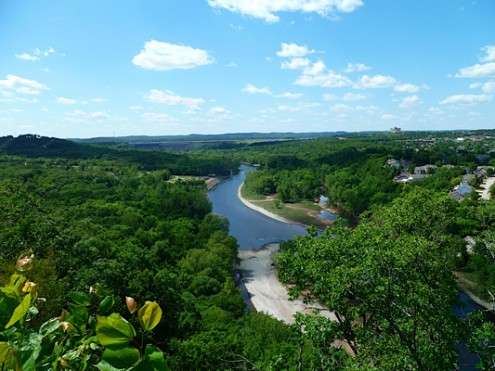
Editor’s Note: This is the third in a series profiling 2014 Elite Series locations.
The Bassmaster Elite Series pros should have little trouble catching limits of bass when they venture to Table Rock Lake in early April. It took less than 27 pounds to make the Top 12 cut when Todd Faircloth won an Elite tournament here in 2006, but Table Rock has come around in a big way.
This scenic 43,100-acre Ozark Mountain reservoir supports strong populations of largemouth, smallmouth and spotted bass. The largemouth succumbed to a virus in 1999 that drastically depleted their numbers, points out Michael Allen, a fisheries biologist with the Missouri Department of Conservation.
“The largemouth fishing is getting better,” Allen says. “We’re seeing more and bigger largemouth bass in our sampling.”
High lake levels over the past several years have boosted the largemouth recovery, Allen adds. Flooded bushes and terrestrial vegetation have made for ideal largemouth spawning habitat. The cover also ensures high survival rates for the bass fry.
“The spawn in 2008 was very good,” Allen says. “Those bass will weigh 2 pounds or more by next April. We’re also seeing bigger bass being caught.”
The most recent Bassmaster tournament at Table Rock, a Bass Pro Shops Central Open, was encouraging. Kansan Casey Scanlon won that event in late April 2012 with a 3-day total of 49 pounds, 4 ounces. His most productive pattern was running a Strike King 6XD crankbait over brushpiles and points near spawning pockets 13 to 20 feet deep.
Those were likely postspawn bass. The timing for the 2014 Elite tournament should make for a prespawn slugfest, believes Elite Series pro Brian Snowden. He lives minutes from Table Rock and has fished and guided here for years.
“At that time of year, the bass are normally prespawn,” Snowden says. “The spawn usually happens the second or third week in April. Of course, that’s dictated by how cold the winter is.”
The bass cover at Table Rock is predominantly rock, stumps, standing trees, laydowns and whatever shoreline cover is flooded should the water level be high. Snowden believes most of the bass will be caught no deeper than 15 feet.
One productive fishing location will be wherever a steep chunk rock bank transitions into a flatter gravel bottom near a spawning pocket or flat, Snowden claims. The nearer the bass are to spawning, the closer they will be to the gravel.
Productive lures should include spinnerbaits, jigs and medium running crankbaits like the Wiggle Wart, Rapala DT10 and Strike King Series 5, Snowden opines.
“A jerkbait may still come into play,” Snowden says. “If we get a slick, sunny day, swimming a grub on a jig head will catch them.”
The caveat is the water level. If it is up in the bushes, Tommy Biffle and other Elite pros that dote on the long rod will score big. The most productive flippin’ bite will be up the James, Kings or White river arms where stained water favors the close-quarter presentation.
Table Rock grows big smallmouth and spotted bass, but the winner of the Elite tournament will bring mainly largemouth bass to the scales. The largemouth are heavier on average.
“The pros are going to catch loads of bass,” Snowden predicts. “I think it will take 18 pound a day to win it.”
NATIONAL FISH HABITAT INITIATIVE
The National Fish Habitat Initiative (NFHI) deserves some of the credit for Table Rock’s excellent bass fishing. Major supporters of NFHI include the National Fish and Wildlife Foundation, Bass Pro Shops, the U.S. Fish and Wildlife Service, the Missouri Department of Conservation, Arkansas Game and Fish and the Corps of Engineers.
The NFHI has planted brush and other cover in Table Rock Lake, improved the water quality in the watersheds, conducted fish surveys and radio tracked tagged bass.
You can get GPS coordinates for the cover planted by the NFHI at Table Rock here: http://newmdcgis.mdc.mo.gov/tablerock/.
A link in the upper right corner of the GPS page takes you to an online survey that asks for angler opinions regarding fish habitat.

